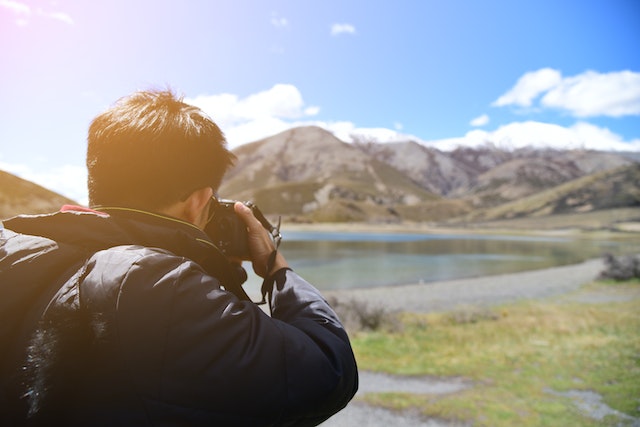Photographing water perfectly: Rarely does a subject offer such a variety of opportunities to take interesting pictures with it as water does. Find out here how you can photograph the cool water in a versatile and exciting way.
Everything flows!
Water inspires photographers for good reason. From effective reflections to elfin veils to fascinating drops, you can photograph the wet element in an incredibly diverse way. Both system and single-lens reflex cameras are suitable for this (especially for those who want to gain experience with manual settings) as well as compact cameras or different motif programs. Look for yourself!
Here you can find the best photography workshops to learn photography in 2023.
Table of Contents
1. Sharp! Just Freeze the Water
It doesn’t matter whether it’s summer action at the pool, streams in the forest or waves on the beach: In order to “freeze” water photographically (1x distance away), the fastest possible shutter speed must be used. Situations with a lot of ambient light are better suited for this than dark surroundings – simply because only very short exposure times freeze the movements.
- Shoot manually
If you make the settings manually, try starting with a shutter speed of 1/500 seconds or faster. Adjust the aperture and the ISO value accordingly (depending on the lighting conditions). The following applies: the shorter the exposure time, the further the aperture must be opened or the ISO value adjusted upwards.
- Select exposure time
An extremely short exposure time can be preselected to depict water in a crisp, sharp manner. To do this, switch to the “time preselection” mode (depending on the manufacturer, e.g. Tv/S) and work with times of 1/500 seconds and shorter. The camera automatically selects the aperture and ISO accordingly.
- use program
Alternatively, you can try your camera’s scene modes – sports scene programs, for example, use very short exposure times.
2. Everything Flows! The Veil Effect
Who doesn’t know them, the pictures with velvety-looking, flowing streams of water? Long exposure times of at least half a second must be set for water motifs with the fascinating veil effect. A tripod should be used to avoid camera shake. If the ambient light is very bright, it may be necessary to screw a gray filter (which absorbs light) in front of the lens in order to achieve the necessary long shutter speeds. Low ISO values of 50 or 100 are helpful for the haze effect. Experiment with manual settings for time, aperture and ISO, or with the “Shutter Priority” mode.
3. Macro! Drops in Close-Up
Photo enthusiasts keen to experiment and everyone who likes to play with photo equipment, photographic settings and visual composition should take this motif tip to the photographer’s heart: individual water drops in a close-up! These captivate with fascinating light reflections and diverse play of colors. System or SLR cameras with a macro lens are ideal for this, but you can also achieve good results with compact cameras and motif programs. It is important to place the drop in such a way that it can be easily separated from the background (= sufficient distance between the model and the environment). The camera should be placed on a tripod. The aperture must not be set too low so that the sharpness still reaches far enough. A possible combination of the settings can be: 100 mm focal length, ISO 100 aperture 18, 1/250 sec exposure time – it is of course worth experimenting with the settings.
4. Wow! Use Reflections
The crystal-clear mountain lake when hiking, the puddle after the rain, the garden pond at the barbecue – water surfaces offer the chance to serve as an interesting photographic mirror everywhere. The next time you go hiking and come across a mountain lake, just consciously use the reflective effect of the water surface.
- change perspective
Of course, the reflections change depending on your point of view – consciously bend your knees sometimes so that the reflections come into their own.
- use symmetry
Incidentally, mirrored motifs appear particularly balanced when the edge along which the mirror is reflected is placed centrally and the motif (the mountain range) can be seen twice (in the water and in the sky).
5. Perspective! Remove Reflections
So-called polarizing filters can be used to reduce or remove light reflections on non-metallic surfaces such as water. If you photograph water surfaces, you can influence reflections and reflections by using polarizing filters. Fascinating!

